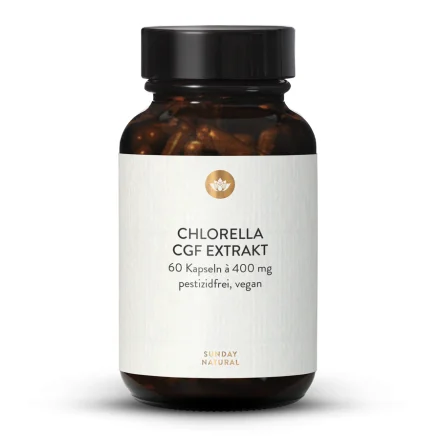Chlorella
This freshwater algae is characterised above all by its extraordinarily high chlorophyll content and the unique compound contained in its cell nucleus known as chlorella growth factor (CGF). Different methods of cultivation and production (e.g., cultivation in glass-roofed basins, open-air basins with direct sunlight or in light-flooded glass tubes) can influence factors such as flavour, chlorophyll and amino acid production, as well as the algae's final nutrient profile. We offer chlorella from a variety of cultivation methods, each sourced from the world's best producers in each technique.
Chlorella vulgaris from Japan
A special variety of chlorella, this strain of C. vulgaris has an exceptional nano cell wall which provides higher bioavailability. Highest chlorophyll content available. Cultivated in open-air pools with natural sunlight in the south of Japan. Tested for radioactivity.
Chlorella vulgaris from Germany
Particularly light green and relatively mild-tasting C. vulgaris from Germany. Cultivated in a hermetic circulation system using glass tubes to maximise light supply. Also available with bioactive vitamin B12.
Chlorella vulgaris from Portugal
Very dark green and nutrient-rich C. vulgaris cultivated naturally in glass-roofed basins in a remote region of Portugal. Certified organic. White chlorella and honey chlorella also available, grown without exposure to sunlight for an extremely mild and sweet taste.
Chlorella & Spirulina
These two freshwater algae are perfect for daily intake due to their complementary nutrient profiles.
Chlorella in Organic Green Power
Chlorella in Sunday Essentials Multivitamins
Our multivitamins provide comprehensive nutritional support. Vitamins I supplies all water-soluble vitamins (vitamin C and the B-complex) in combination with other potent bioactives, powerful antioxidants, premium algae powders, mushroom extracts and select superfoods. Vitamins I is also available in a high-dose Forte variant. Our All in One provides a complete nutritional foundation, offering all important nutrients in just one supplement.


























